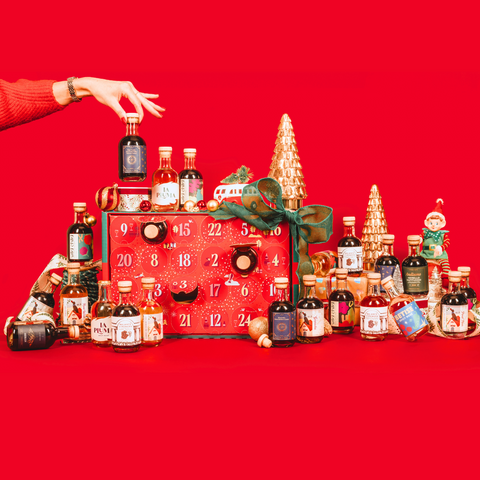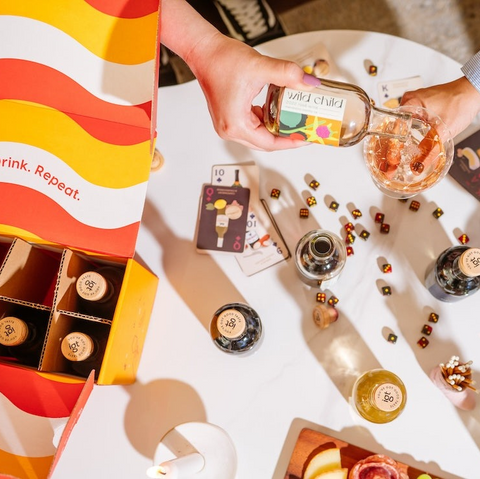See. Swirl. Smell. Sip. Savor.
There is a proper way to taste wine. The best way to drink wine so that you discover different nuances and select according to your palate is to follow the five steps for tasting wine. These Five steps in wine tasting begin the moment the sommelier delivers the bottle leading up to the first sip. Proper wine tasting is all about connecting with wine. This is the bonus step that most people forget about when talking about how to drink wine. To make it easy to remember how to taste properly when drinking wine, follow these five steps (and our special bonus step 🎉). Let’s review.
Simple Steps To Taste Wine





Step #1 – See
In this step, you are looking at the wine in two very important moments. The first is when the sommelier delivers a bottle of wine to you at your table. At this moment, you are checking for the correct vintage. This is important because there could be a huge price difference in a bottle of Cabernet from 2017 and 2007, for example. You want to make sure you get what you pay for!
The second moment is after the wine is poured into the glass. Holding your wine glass by the stem, in front of a white napkin and in good light, will allow you to look at clarity and color. You first want to notice whether the wine is clear or cloudy. Clarity is key as wine should always be clear and brilliant in color. (Natural wines can be the exception.) A cloudy wine could be an indication of a wine fault or that something went wrong during the winemaking process.

Next look at the color. Color can give you an idea of the climate in the region where the wine is from. Wines from cooler regions tend to be paler in color, whereas wines from warmer regions have a more intense color. Color can also indicate the age of a wine. White wine gets darker as it ages, and an aged white wine will be gold to amber in color. Red wine, on the other hand, gets lighter and more transparent. An aged red wine will change to garnet and may have a brick-red rim that circles the edge of the wine juice in the glass.
Expert Tip: by angling the wine glass at a 45-degree angle, you will notice the rim of the wine. A wide color variation of the rim can indicate that the wine in your glass is an older wine, while a tight or non-discernable variation can indicate that you are about to enjoy a young wine.
Step #2 – Swirl
Absolutely my favorite step! This is not something we do only to look fancy and professional. Swirling the wine actually aerates it and opens up the aromas, making smells more robust and easier to identify.
Swirling the wine can also show off the wine legs, or tears as some call them. In a glass of wine, the legs are the lines of lingering wine that continue to run down the sides of the glass as it sits in place. Great legs are not an indication of quality but rather an indication of the wine’s viscosity, sugar, and alcohol levels.

Step #3 – Smell
The nose is amazing; well trained, it can smell over 2,000 different aromas. Do not worry: when smelling wine, the expectation is not to be a master smeller; simply identifying basic aromas is good enough.
Start off with the basics, like is it pleasant or unpleasant? Then smell in colors. Does it smell yellow, orange, purple, or red? Next, try to pick a fruit, flower, or spice. Don’t be disappointed if you only smell wine… that is the number one correct answer!

Step #4 – Sip
Finally, the step that everyone looks forward to in this tasting ceremony. How you sip says a lot about you, actually. The proper way is to avoid gulping, deep throating, or smacking. Slowly take a reasonable amount of wine into your mouth and swish it around.
At this point, you want to get to know the wine by introducing it to all parts of your mouth. The front or tip of your tongue is where you will notice sweetness; the sides of your tongue is where the acidity will tingle and increase your desire for food; the center and back of the tongue is where you will notice any dryness and bitterness coming from tannins; and, lastly, as the wine slowly slides down your throat, you will uncover the alcohol sensation of the wine.

Step #5 – Savor
Ultimately, savoring is what makes wine more special than any other beverage. Savoring is the experience that you have with wine as the lingering aromas, texture, and complexity stay on your tongue and in the back of your throat. This lingering sensation is also called the finish. A long and complex finish is a good indication of a quality wine.

Bonus Step 🎉
The bonus step is to connect with the wine. In this bonus step, it is important to make a final judgement about the wine. This final judgement can be two-pronged. The first is objective: was the wine balanced with pleasant aromas and taste? The second is your own personal opinion about how you connected with the wine: is the wine something you would pay for again, is it something you want to try again with food, or would you recommend the wine to a friend?
When wine tasting, it is best to taste wine in flights. A wine flight is a lineup of at least three two-ounce glasses of wine. They can be themed by region, vintage dates, or grape varietal. Comparing wine side by side gives you a great perspective and a way to identify nuances and taste.
Food is the final addition you can add for a proper wine tasting experience. I suggest a variety of snacks or small bites, ranging from spicy to salty and sweet. Keep in mind the qualities of your snacks and how they will react with or compliment your wines, paying attention to how they balance or imbalance each other on your palette. Pairing wine with these different snacks will give you an opportunity to connect with the wine and might just change your mind about a wine you didn't enjoy at first.
Ultimately, wine tasting is best when you are relaxed. Grab a couple “new to you wines,” follow the steps for tasting wine, and enjoy your snack life for the very best wine experience alone or with friends.









